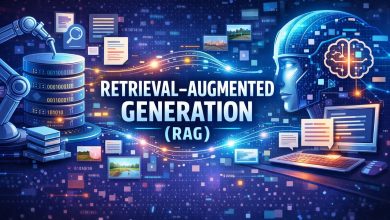
Every digital interaction either builds trust or breaks it. That’s why choosing the right AI agent, chat-based AI agents or backend automation AI, isn’t just another tech decision—it’s a strategic move that shapes your organization’s future. As customer frustration with long wait times and repeated handoffs grows, AI agents are stepping in to deliver fast, seamless experiences. Younger generations, particularly Gen Z, are driving this shift, embracing AI for appointment scheduling, automated support, and proactive reminders.
For businesses in regulated industries, AI adoption is about more than just speed and efficiency. These sectors require AI solutions that adhere to strict standards and operational constraints. Any misstep can lead to regulatory penalties, reputational damage, or legal consequences.
AI agents—software programs that use AI to analyze data, automate routine tasks, and optimize workflows—are becoming fundamental to customer engagement and backend automation. In healthcare, for instance, they must ensure secure and accurate interactions and streamline backend operations like claims processing, compliance auditing, and record-keeping—without cutting corners.
In these environments, the challenge isn’t whether to implement AI agents, but how to ensure they perform flawlessly, delivering measurable impact, effortless compliance, and zero compromises.
Navigating AI Agent Adoption in Regulated Industries
While AI agents offer tremendous potential, implementing them in regulated industries isn’t as simple as flipping a switch. A key concern is containment—keeping AI within predefined operational and compliance boundaries rather than allowing it to act unpredictably—ensuring an AI agent operates within its intended scope.
To manage this, many organizations adopt a phased rollout strategy: initially deploying the AI agent to address a portion of expected queries that are monitored daily. This initial period of proactive monitoring and iterative training refines the AI agent’s performance and ensures compliance. Unlike traditional chatbots with static responses, AI agents continuously learn and refine their outputs. Without strict guardrails, proactive monitoring, and ongoing oversight, AI can stray beyond approved boundaries, creating risk instead of reducing it.
Regulated industries need AI agents that work within constraints. The best solutions feature built-in compliance and guardrails, ensuring up-to-date, verified responses while safeguarding security, privacy, and trust.
What To Look for in an AI Agent
Organizations must assess their readiness and define the specific challenges they aim to solve before choosing an AI agent. It’s also important to establish a clear ROI framework upfront to ensure the AI solution meets operational needs and delivers measurable financial benefits.
With these foundational considerations in place, the next step is to evaluate whether an AI agent is the right fit for your organization. Factors to consider include:
Accuracy
In regulated environments, accuracy is non-negotiable. AI agents must deliver precise, verifiable information, whether responding to customer inquiries or executing backend tasks, ensuring compliance with industry standards. This includes built-in regulatory features and continuous auditing mechanisms to guarantee that data and responses remain up-to-date and aligned with evolving regulatory frameworks. Real-time monitoring ensures the system learns and adapts, maintaining consistent, accurate information with every interaction.
Reliability
Reliability goes beyond system uptime—it’s about consistency within legal boundaries. AI agents must function with robust safeguards to maintain operational integrity. This results in dependable, AI-driven interactions that conform to industry regulations, preventing potential missteps.
A foundational approach to AI development plays a role in reliability. Some solutions start with chatbot components and later attempt to add large language models (LLMs), creating a fragmented, friction-filled experience. A more robust solution starts with LLMs as the core framework and then scales back to incorporate chatbot elements. This ensures the AI agent can handle complex, nuanced interactions while maintaining the necessary controls for regulated industries.
Transparency
When AI interacts with users, they must always be aware they are engaging with an AI agent. Likewise, when AI automates backend tasks, organizations must maintain transparency in their decision-making processes to ensure accountability.
Adaptability and Scalability
Regulations are constantly evolving, and so must your AI agent. It must be adaptable enough to reflect changes in rules and standards while maintaining consistent performance. Scalability is also key. As business needs and user expectations grow, the technology should evolve seamlessly without compromising accuracy or compliance.
Compatibility
A successful AI agent must integrate smoothly with existing systems and workflows. Frictionless integration supports secure and efficient data flow, enhancing the overall experience. Maintaining compatibility with legacy systems allows for a streamlined transition and ensures that security measures are consistently applied across all platforms.
Compliance and Guardrails
In regulated industries, compliance isn’t just an add-on—it’s the foundation of trust. AI agents must adhere to strict regulatory standards and be equipped with built-in guardrails that prevent them from overstepping their intended scope. This means aligning with established cybersecurity guidelines and industry best practices, obtaining independent audit reports and certifications, and maintaining robust security measures. By doing so, organizations can deploy AI solutions that consistently deliver reliable, precise results while upholding the highest data protection standards and regulatory adherence.
Effective guardrails include specific content filters and crisis intervention protocols to guide users in sensitive situations. Systems may also incorporate retrieval-augmented generation (RAG) technology, which combines a language model with approved, curated content—ensuring responses remain within compliant boundaries and mitigating the risk of hallucinations.
AI Agents in Regulated Industries: Future Considerations
Looking ahead, rapid advancements in AI reasoning capabilities are set to redefine what’s possible. AI agents are evolving beyond routine tasks, now poised to tackle complex processes that were once unimaginable. Leaders must prepare for a future where AI handles intricate, high-stakes interactions—all while keeping the experience conversational, intuitive and transparent.
Leaders should also be aware of how entrenched legacy systems can impede progress. As AI evolves, modernizing outdated infrastructure will be critical to fully leverage new reasoning capabilities—ensuring AI can handle more complex tasks and integrate with reformed processes.
Organizations that adopt AI agents built for precision, robust security, and unwavering compliance are best positioned for long-term growth. By investing in solutions that build trust and adapt to emerging demands, business leaders can secure immediate gains and set the stage for sustained, transformative success.





